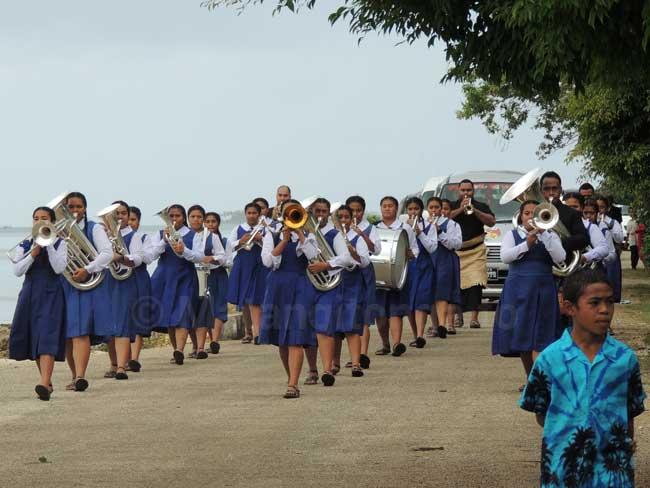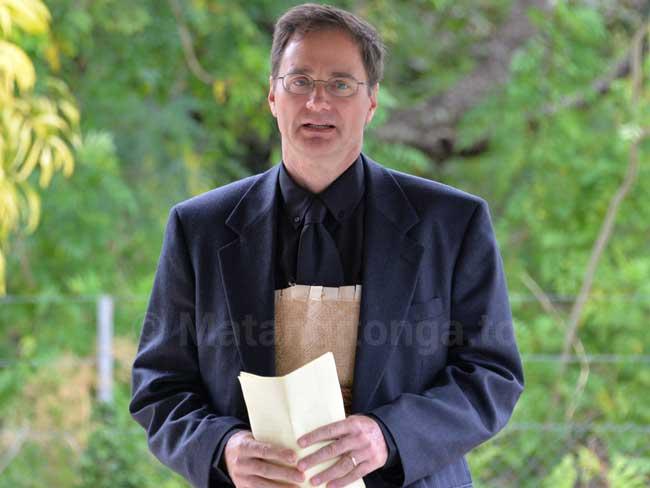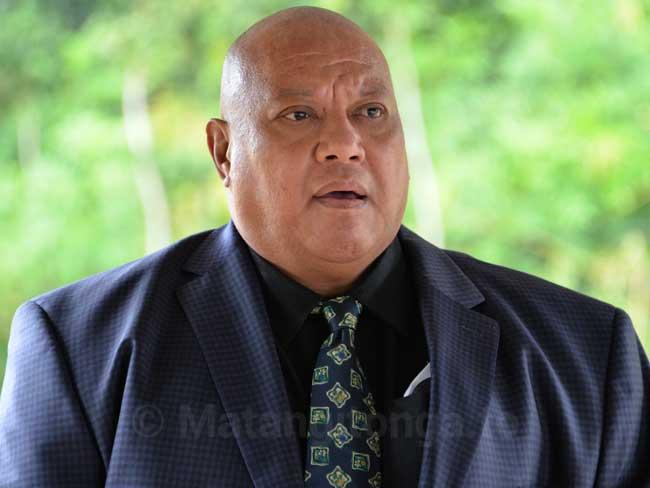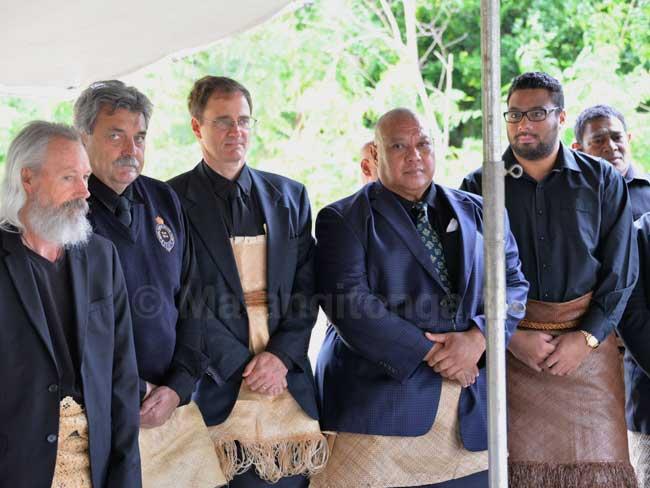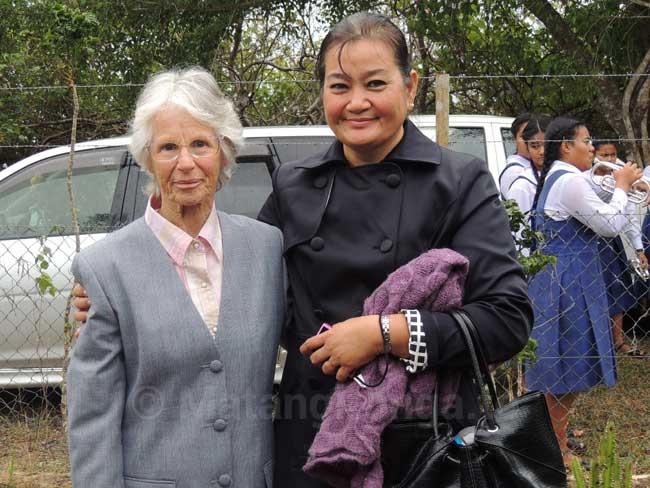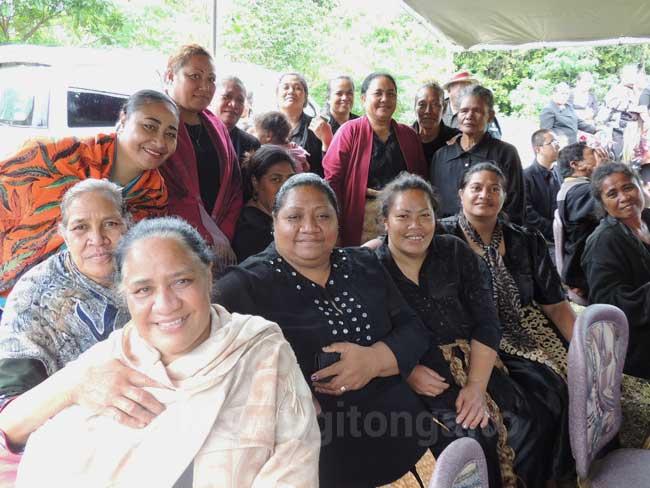Photos by Pesi Fonua and Linny Folau

A noted American geo-scientist Professor William R. Dickinson (83) was laid to rest at Mala’e Sia cemetery in the village of Nukuleka, Tongatapu on Sunday, 2 August.
The small intimate service was attended by his son Edward Dickinson who flew in from the United States, his colleague Professor David V. Burley, Lord Vaea of Houma and friends and the people of the small village.
A member of the American National Academy of Sciences, Prof. Dickinson from the University of Arizona, made key contributions to several subdisciplines of geosciences and to the archaeology of the South Pacific.
Edward in a heartfelt speech said his father was a scholar and a great scientist who worked tirelessly for his sheer love of learning.
He said their family had discussed for a week on what to do after their father died suddenly in Nuku'alofa on July 21. “When Professor Burley suggested this place my brother said it was perfect. My father had said that Tongans are the most kindest and gracious people - and I see that today. Thank you for what have you done for him and for welcoming us, in my heart, malo.”
Lord Vaea said Nukuleka was honored to be the last resting place of Prof. Dickinson.
Queen Salote College brass band led the funeral procession with Head Tutor Rev Tutaleva Lolohea conducting the graveside funeral service.
Lapita people
At the time of his death, Prof. Dickinson was in Tonga on a brief visit to Nukuleka and other early archaeological sites around the lagoon on Tongatapu.
He was a world-renowned geologist who was a significant contributor to the identification and study of plate tectonics in the 1960s and who later pioneered the study of sedimentary rocks to reconstruct plate movements and ancient landscapes.
Prof. Dickinson had been conducting research in the South Pacific since the 1960s. He realized he could help archaeologists trace the migration path of people from island to island and find sites of past human habitation. Archaeologists track these migrations in the Pacific by the pottery that people carried along with them. The pots were made with clay combined with sand from where the pot was made. By collecting sand from various islands and comparing it to the sand in a particular pot, Dickinson could figure out on what island or island group a pot had been made. To do so, he examined thin sections of the pot fragments under a microscope.
Later he became interested in reconstructing sea levels across Oceania to understand the ancient landscapes first peoples encountered.
His work in Tonga included studies in Ha‘apai in 1992, Tongatapu in 2001 and Vava‘u in 2005. His research has been instrumental in the identification of Nukuleka Village as Tonga’s first settlement.


